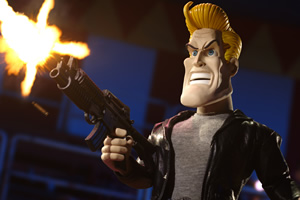Mike Mort interview
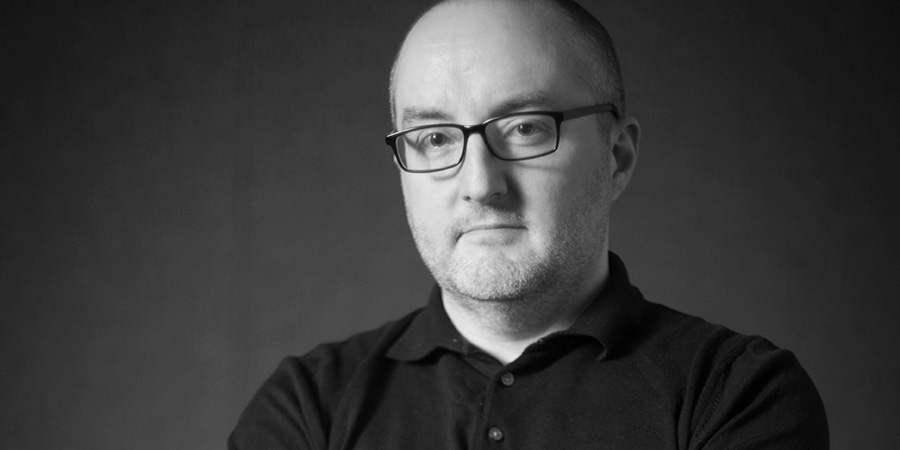
Four years in the making and almost another four till release, the latest brilliant British stop-motion film, Chuck Steel: Night Of The Trampires, is out now: a comedy-horror with elements of sci-fi and fantasy in the style of 1980s' action movies, it's a truly unique feature that needs to be seen. We talk to writer/director/star Mike Mort about this wonderful mash-up and the long journey of hero character Chuck Steel.
Congratulations on the film, Mike. It was clearly a real labour of love for you!
Thanks. Yes, I guess you could say that. It certainly was a lot of work!
You've been working in stop-motion for a long time - where does your love of the form come from?
I started off as a fan of old monster movies, especially those of Ray Harryhausen. I grew up watching any dinosaur or monster movies I could get my hands on - mainly on VHS but sometimes at the cinema. My dad enjoyed those films too so used to take me to see them regularly. I always loved drawing from a young age and then began making plasticine models of things I had seen in films. Morph used to be on Take Hart back then, which always drew my attention as it made me realise, I could make these clay models move somehow. The old BBC kids' show called Clapperboard inspired me further when I saw some Super 8mm films submitted that featured plasticine monsters battling each other. My brother had a Super 8mm camera which he never used so I nicked it and started experimenting with animation and filmmaking.
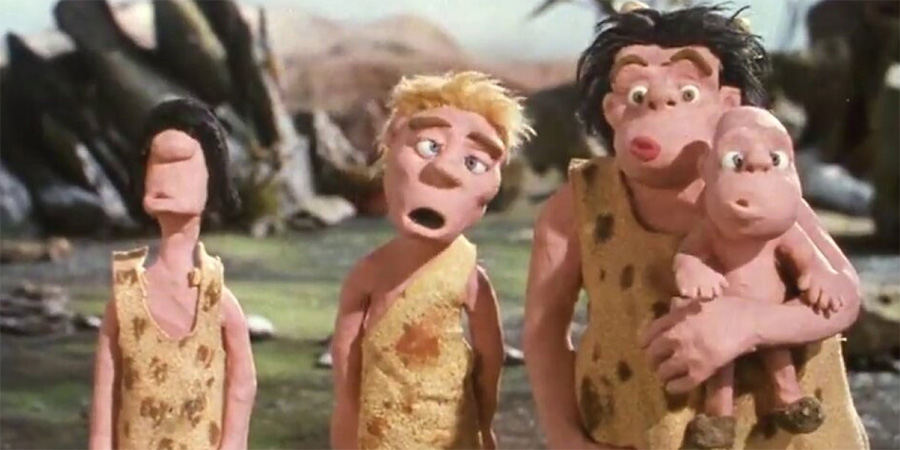
Every time the film cartridge got sent off to the lab to get developed, I would wait with bated breath to see the results. Each time there was noticeable improvement in what I was doing so it spurred me on to do more. I later started to admire the work of Phil Tippett, Doug Beswick, Dave Allen and Randall William Cook - all pioneers in stop motion visual FX. I originally wanted to follow in their footsteps but the year I left college, Jurassic Park came out and virtually killed that small industry overnight. So, I branched out into more cartoony animation and co-created Gogs in the 90s, which won a BAFTA amongst other awards. Gogs was a slapstick caveman comedy where I could still shoehorn in a dinosaur or man-eating plant into each episode.
Chuck Steel: Night Of The Trampires mashes up a lot of genres: which were most important to you in writing the script? Is it difficult to balance the demands of each - the shock for horror vs the shock for comedy, for example?
Getting the tone right for the film was constantly on my mind. I wanted to make a very silly, absurd, fun film with stupid humour and juvenile gags but didn't want that to be the only string to its bow. I still wanted there to be a storyline, albeit a ridiculous one, that could hold your attention and for there to be a genuine threat to the characters in this ridiculous world.
Whilst it could be called a spoof or parody, I never viewed it that way while making it - I just wanted it to feel like a film that could have been made in the 80s, complete with un-PC dialogue etc. Personally, I'm sick of movies lecturing the audience on what they should be thinking or feeling - I just want to be entertained for 90 minutes. That's what I tried to capture in the film - the craziness and freedom of the 80s action, horror, and comedy movies that I grew up watching.
Chuck Steel himself is a long-gestated character?
Yes, I came up with Chuck Steel when I was 15 years old, back in my school days - I used to doodle him in my schoolbooks when I should have been concentrating on the lessons. He's been with me ever since in some form or another - I made a Super 8mm film with back when I was 15/16, then a 16mm college graduation film with the character. He was always an idea I wanted to see fleshed out into a longer film. I can't quite believe I got it made!

How did Night Of The Trampires develop from those shorts?
In my early short films with Chuck and a lot of concept art I did, Chuck wasn't always a cop - he was Mad Max type hero for a while, then a sci-fi hero - it all depended on what film had influenced me at the time and what I doodled. He had an arch enemy called Hooverleg at one point - an evil mutant with a vacuum cleaner for a leg! I think the cop angle solidified at some point, but I knew I wanted to keep the horror elements in there too, so I started writing the feature script back in or around 2000, which pretty much formed the basis of the script we ended up shooting. There's been lots of spoof cop shows and sketches over the years, so I was determined to find a unique angle to it, which is where the whole horror side of it comes in.
I embarked on making the short film Raging Balls Of Steel Justice in 2011, completely on my own in my basement, in an effort to get Chuck out of my system, and that's when I met my financiers. They helped me complete the short and then wanted to go straight into a feature!
You've combined an amazing number of techniques: stop-motion animation, CGI, green-screen trickery, etc. Did you really push the boat out on this production and tread new ground? Is there anything you're particularly proud of?
I had a shopping list of things I wanted to do in stop motion - a car chase, a monster fight, a huge battle, melting effects, transformation effects and I had an idea of how to achieve them all. It all comes down to finding the right crew and having a team of people around you who get where you're coming from.
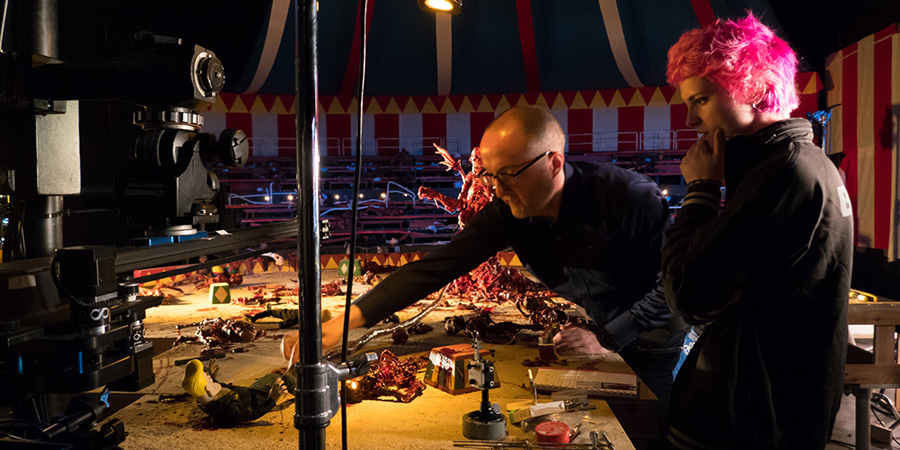
I'm really proud of the scope of the film. We had probably around a third of the budget that say an Aardman or Laika film might have so we achieved a lot of bang for our buck! The crowd scenes are full of puppets running around - there's no CGI shortcuts taken on those scenes. I also love the look of the film as it really feels like the films of that era. The sheer number of individual character designs is something I'm proud of too - every character is different. The monster stuff and transformations are also some of my favourite scenes. And the car chase. So yes, there's quite a few things we did that hadn't been done before, at least not on the same scope. The soundtrack is pretty cool too!
It must have been years in the making, but with a character you're clearly very fond of ... could a sequel be in the offing?
I'd love to do sequel and I have a great idea for a story, but the reality is that the distribution journey for the film has been so fraught that it's probably unlikely to happen. That said, never say never!
Was it hard to keep motivated on that long journey of development, production and release?
Yes. I gave up on the idea a number of times as it just seemed impossible to raise that kind of money for something so crazy. I forced myself to give it one last go by making the short film in my basement after I had been to see the first Expendables film - that film gave me the kick I needed to not give up. We nearly had Sly Stallone as the voice of Chuck on the feature film at one point, which would have been a great full circle tale, but that's a whole other story.
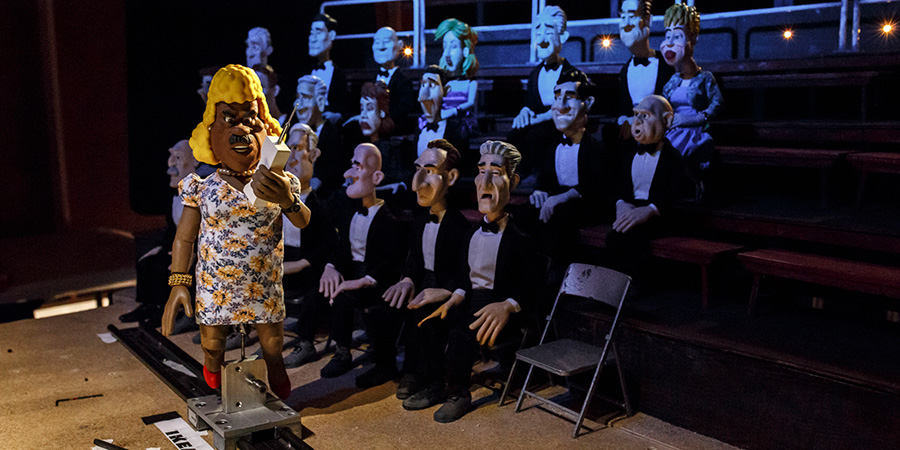
You still managed to attract some famous names to voice characters! Was it important in securing financing?
When we started the film, we approached it the same way we made the short film, since that had worked well, with me doing a bunch of voices and a group of voice actors filling the other roles. We felt that all our money needed to be on screen, rather than paying for an A-list star up front.
We always felt that if a studio eventually wanted the film, they would have to cover the cost of revoicing, but that never happened. It was a question that kept coming back repeatedly - should we have famous names in the film? It doesn't always equate to animated films being easier to sell or indeed equate to attracting a wider audience, so we plumped for putting the money on the screen. We did re-record two roles when the opportunity came up to work with Jennifer Saunders and Paul Whitehouse: I think it was because we were still wrestling with what was the best thing for the film's chances. Post-syncing is not the best way to do it in animation, but they did a great job.
You combined a wide range of roles on the film, both behind and in 'front' of the camera. Was that intentional? Was it important for creative control?
In hindsight, I think I took on a few too many roles. All I remember is the stress! I think I had to be a control freak to a certain extent though. In my earlier career I was always across multiple areas as sometimes there was no money to hire anyone else - especially on Gogs!
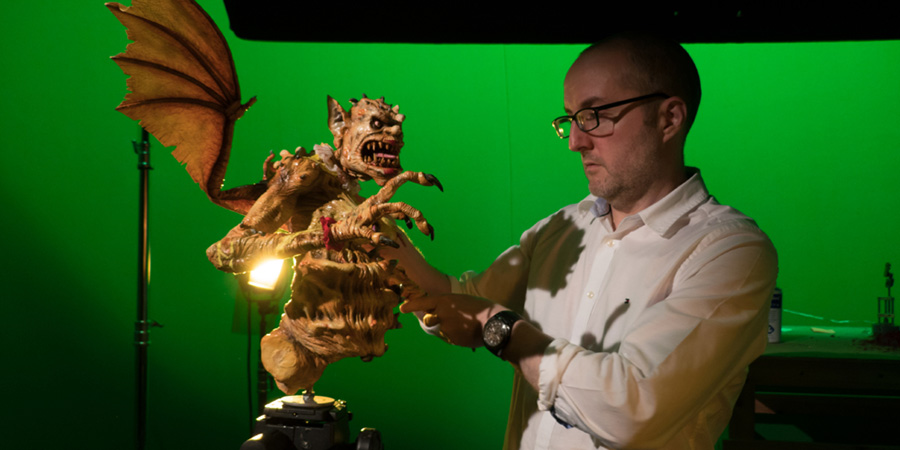
I was self-taught with everything really - animating, directing, model making, cameras and lighting - I had handled a lot of this stuff myself before but on the feature film, I really wanted to step away from certain things and focus on the bigger picture. It didn't quite pan out like that as I ended up getting involved in a few areas again, mainly the model making. I didn't mind though as I love sculpting and it meant I could get it exactly how I wanted.
Doing voices was new for me as my only prior experience was on the short Chuck Steel film - which I did when I had no budget. Necessity is the mother of invention, I guess. Doing the voices was kind of fun but I had to lock myself away from anyone else as I was filled with self-doubt a lot of the times. Like I said, it was stressful. I am glad I kept a tight rein on things though as I can say the film turned out pretty much exactly as I wanted it.
How does financing work on a hands-on, animated feature like yours, without a big distributor from step one?
That was the one chink in our armour. Whilst I had the luxury of the film being independently financed, and had full creative control, the fact that we did not have a distributor on board from the start ultimately came to bite us when trying to get the film sold. We did screen the unfinished film for some studios prior to finishing but they all wanted to play it safe and see the finished thing.
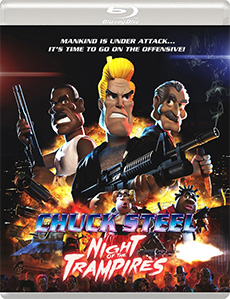
When we then finished production in 2018, we did a short festival run of about 6 months, which got the film noticed. We then spent two whole years being strung along by various entities that ultimately led nowhere. Just when we seemed to be about to get somewhere, and due to events taking place in the US, we were literally told by a studio head that we can't have white cops as heroes anymore - even a plasticine one. Then we had another avenue that seemed to be going somewhere but then Covid hit and killed the industry for a while so that was that. Plus, the world had become a PC hellscape since we started the film, which made it even harder to sell.
In the end, after being stuck in limbo for so long, we opted to release it to the platforms ourselves. By now, my backers couldn't spend more money on the marketing, so it's been released without much fanfare, which is kind of soul destroying for everyone, but we had no control over how the marketplace changed between 2014, when we started, and 2018, when we finally finished it. It is not a friendly environment for independent movies anymore. The business seems to be in a bit of a mess.
How did you get started in the TV/film industry, and animation in particular?
After making Super 8mm shorts as a kid, I went to Newport film school where I learnt a bit more about cameras and the industry etc. My graduation film, a Chuck Steel film called Hard As Hell, played in the Stuttgart animation festival, where it was seen by a chap called Peter Dougherty who worked at MTV. He gave me my first job - creating the opening titles for Headbanger's Ball, which I shot in my parents' garage. After that I hooked up with a Newport Film School colleague and began working on Gogs. That show took us seven years to complete. After that I went into commercials and freelance work for about ten years or so, directing various commercials and TV content.
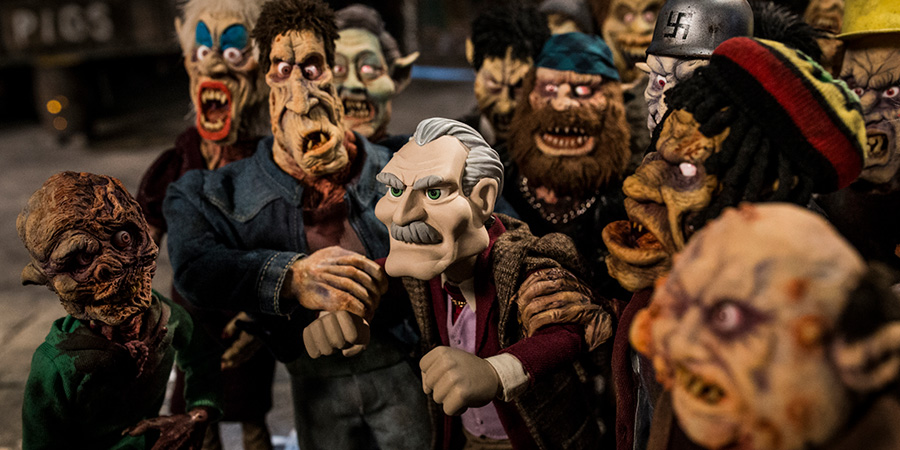
For a new, aspiring film-maker, what would your tips be? Is a degree required or is a portfolio more valuable?
Both are handy. I think a degree might be handier if you want to work on the production side of things, but a portfolio of work might be more useful on the creative side. That's if you want to work for other people. If you want to make your own films, there's no right or wrong way of doing that. Cameras are cheap now and so is editing software etc. Just get on with it and discover your style. Be warned though, it's a hard path to make a decent living these days.
How large a team did you assemble at your studio in Wales to produce the film? Did you work with local talent or tend to attract people in from further afield?
If I remember correctly, I think we averaged around 150 people but at one point went up to 300. The production lasted almost 4 years, including the studio set up time! Which is crazy. The crew were from all over - lots from the Bristol talent pool but many from Europe and further afield. Overall, the crew really enjoyed working on the film, although I think we did test a few peoples' sanity along the way (sorry).
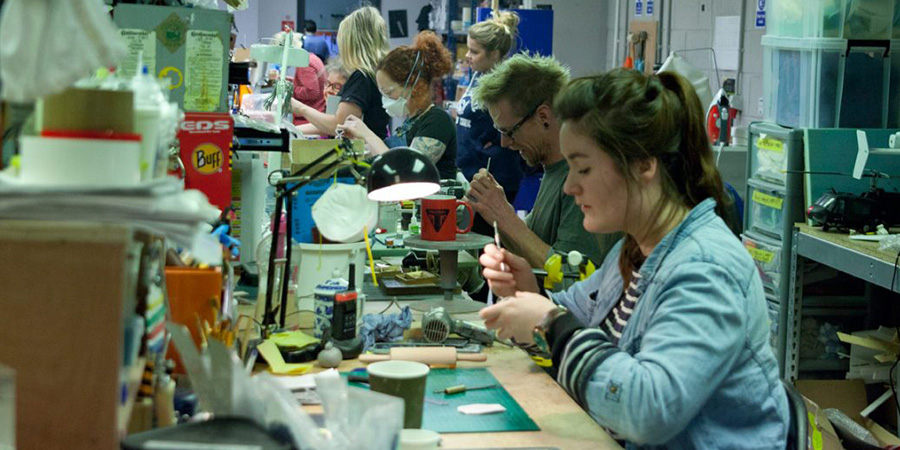
Is it important to be a Welsh/regional production?
Not really. Chuck is clearly an American influenced project. It's getting harder to make films unless they appeal to everyone on the globe these days. That said, we did receive some regional help with the production which was definitely appreciated. I like living in Wales so will always try to shoot here if I get to do another film.
The age-old question: if you were starting out on the film tomorrow, but knowing what you know now, what - if anything - would you do differently?
I'd become a shepherd instead.
Seriously, make sure you work with the right people, get rid of bad apples as soon as you spot them and team up with a distributor before you shoot a frame!
Chuck Steel: Night Of The Trampires is now available to own on Blu-ray. The release is packed with extras, including all of Mort's earlier Chuck Steel short films.
Help us publish more great content by becoming a BCG Supporter. You'll be backing our mission to champion, celebrate and promote British comedy in all its forms: past, present and future.
We understand times are tough, but if you believe in the power of laughter we'd be honoured to have you join us. Advertising doesn't cover our costs, so every single donation matters and is put to good use. Thank you.
Love comedy? Find out moreChuck Steel: Night Of The Trampires

Get ready for the most outrageous stop-motion animated film ever made!
It's 1986, and Chuck Steel is 'the best God damn cop on the force'. When an abominable evil is about to descend on the city of Los Angeles in the form of Trampires - half tramp, half vampire - only a maverick cop who doesn't play by the rules can save humanity.
Directed by two-time BAFTA-winner Mike Mort and voiced by comedy-legends Jennifer Saunders (Absolutely Fabulous) and Paul Whitehouse (The Fast Show), this homage to simpler times is "chock-full of snappy one-liners" (Hollywood Reporter).
First released: Monday 13th June 2022
- Distributor: Screenbound Pictures
- Region: B
- Minutes: 90
![]() Buy and sell old and new items
Buy and sell old and new items
Search for this product on eBay
BCG may earn commission on sales generated through the links above.

